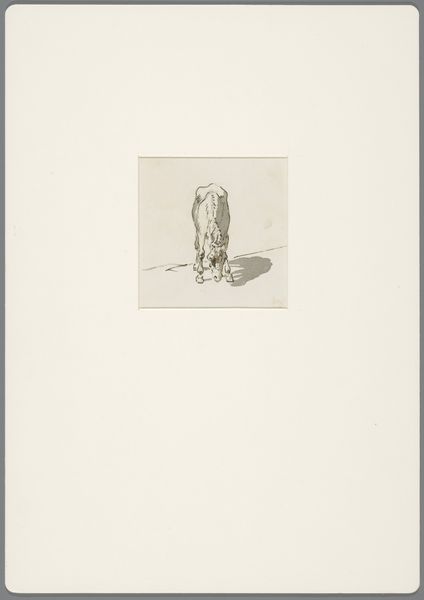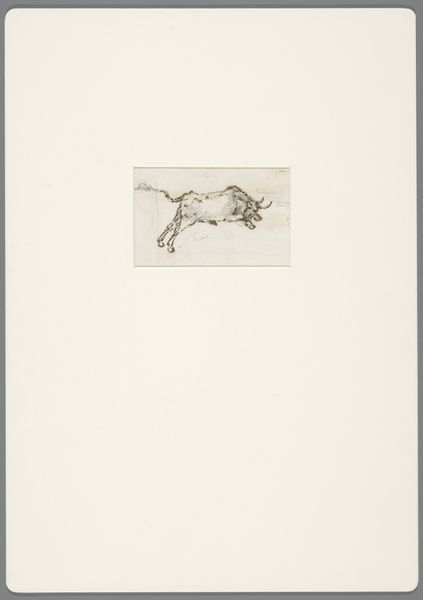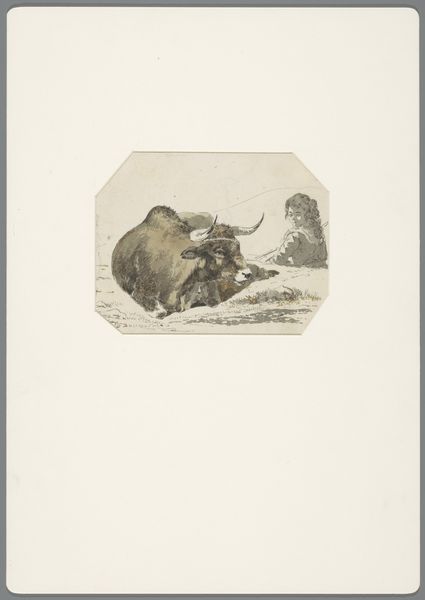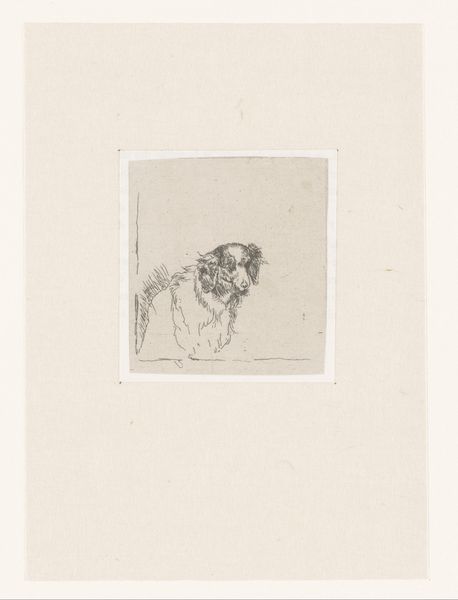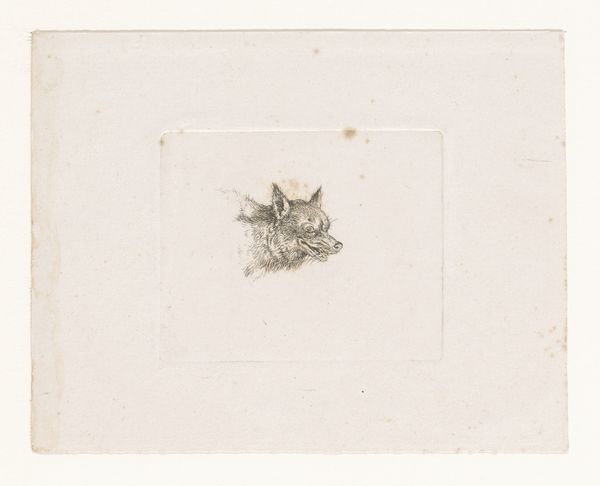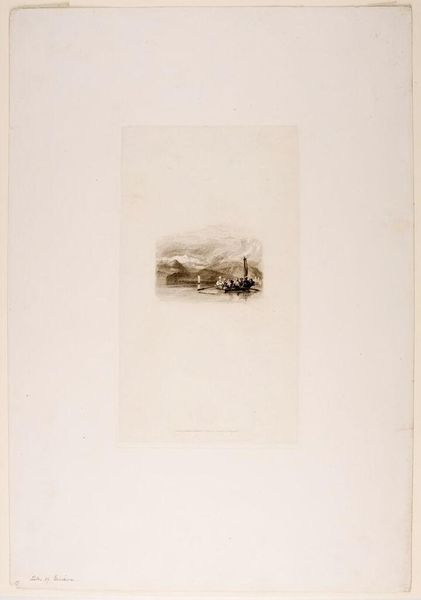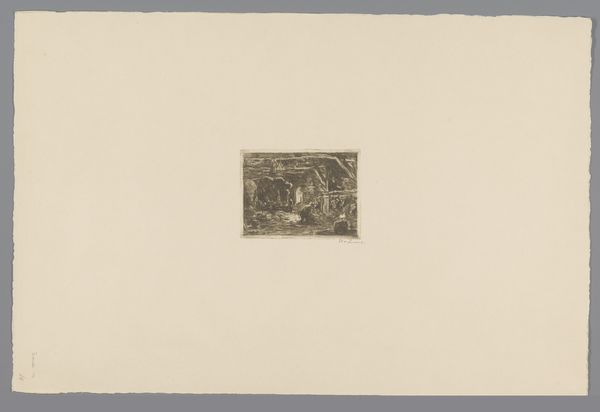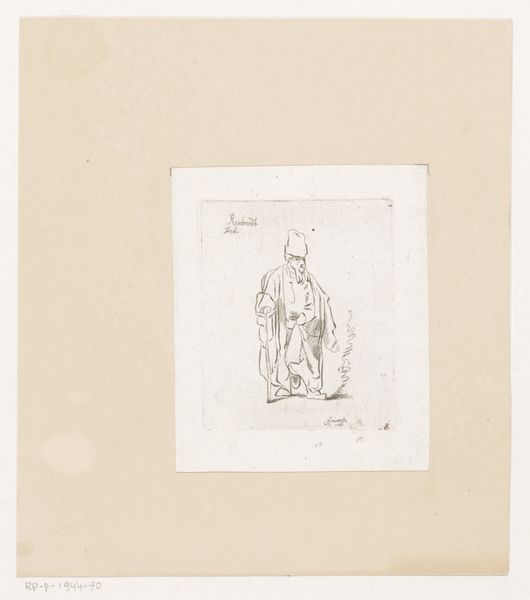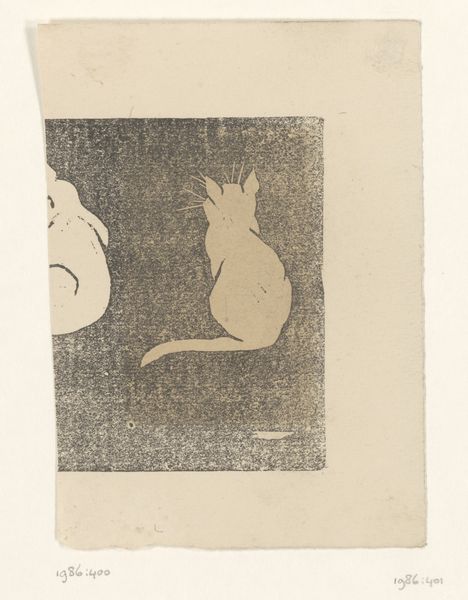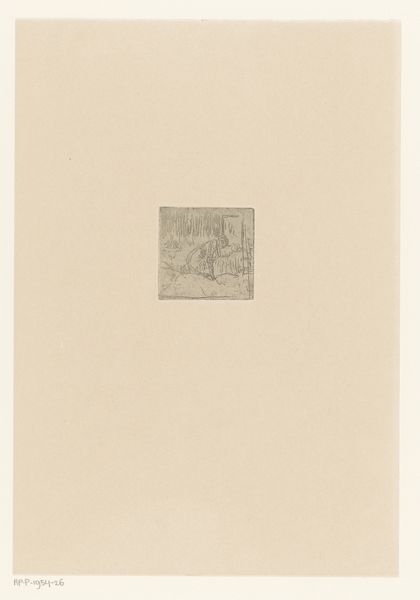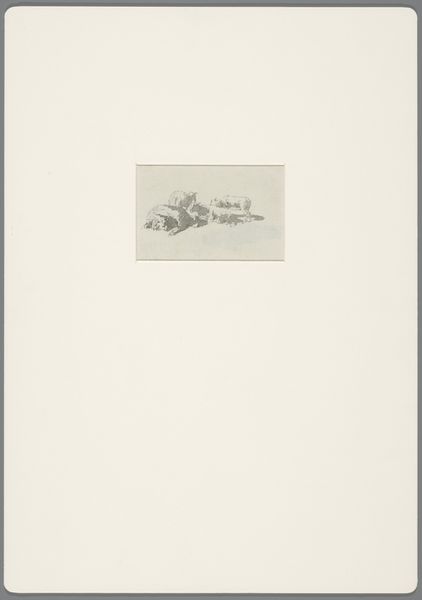
drawing, pencil
#
drawing
#
landscape
#
pencil
#
academic-art
#
realism
Dimensions: height 112 mm, width 161 mm
Copyright: Rijks Museum: Open Domain
Editor: We're looking at "Liggend rund," or "Reclining Cow," a pencil drawing made sometime between 1750 and 1809 by David Alphonse de Sandoz-Rollin. It’s a pretty simple, almost serene image of a cow resting. I’m struck by how realistic the animal is rendered with such a simple medium, it really looks like a portrait. What can you tell us about it? Curator: Well, this drawing, in its commitment to realism, speaks volumes about the changing role of art in society during the late 18th and early 19th centuries. While initially employed for agricultural or scientific purposes, depictions like these quickly found their way into artistic studies due to the increasing urbanized landscape of society during the Age of Revolution, particularly the value placed on understanding the natural world. How do you think academic art ideals influenced the making of this picture? Editor: Academic art usually leans heavily into historical narratives or grand allegories, right? This just seems to depict the cow as it is without trying to load any extra meaning onto it. Curator: Exactly, so while that might seem paradoxical, its realism *is* the statement. During this time, academic art circles had a renewed focus on depicting animals, in line with growing middle-class awareness about farm work. This image becomes about more than a single animal; it’s also subtly advocating a particular view about landscape and national pride, of human labor, of the agricultural and laboring classes. Does the drawing’s style contribute to the political significance that emerges from this simple rendering? Editor: Definitely. The careful strokes and naturalistic depiction of the cow suggest that it is more than just an animal; its quiet nobility invites us to consider its importance to everyday life and how it shapes both urban and rural societies. I hadn’t considered how art movements might subtly promote sociopolitical stances. Curator: Exactly. It also underlines how simple depictions, particularly within shifting social and political landscapes, can carry deep cultural and historical meanings. Thanks for pointing that out.
Comments
No comments
Be the first to comment and join the conversation on the ultimate creative platform.
